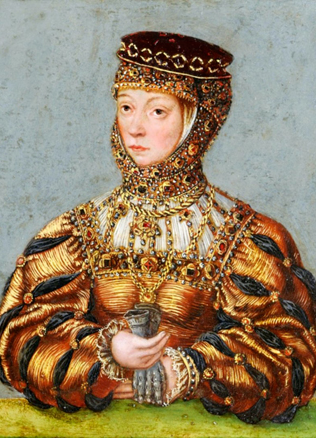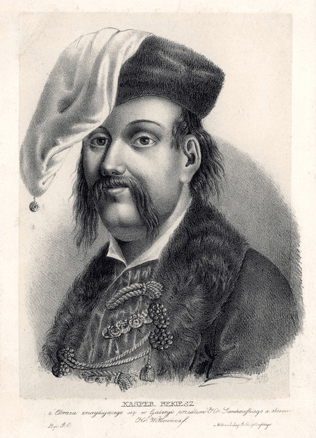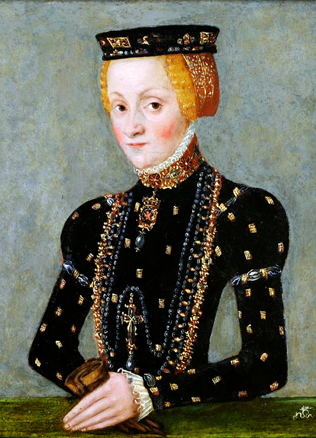Voivodeships and voivodes: on the art of state governance
The ways of governance of the territory of the State of Lithuania in the Middle Ages differed from those of today. A peculiar personal relation of the Ruler with his deputies who lived on the edges of the state rather than the system of offices was the most important thing. Control of the territories or the communities that lived therein was based on the open or concealed force. Man’s subordination was determined by the tithes and duties (work) demanded and obtained from him by the Ruler for the benefit of the latter. Seeking to make a wider use of them, the Ruler had to take care of the development of force structures: construction of castles in the newly occupied lands, forming their garrisons and controlling the entire network of the castles. At different time and in different conditions the occupied territories distinguished themselves in local peculiarities: managers of the castles were of different origin (local or shipped there from elsewhere, dukes or nobles) and had different rights of governance and a different burden of duties and tithes was imposed on the subordinates. The relations between the deputies of the Ruler were undefined. At the end of the Middle Ages governance of the state territory was improved slowly: the dukes who put claims to the local authorities were started to be removed from the regions (lands and dukedoms) of the Grand Duchy of Lithuania, and offices of the state were turning into a hierarchy that was less dependent on the whims of the Ruler.
Centres of force in Vilnius and Trakai
At the end of the Middle Ages changes in governance of the state were taking place towards the union with the Kingdom of Poland and taking over the structures of government, which justified themselves there.
In the 14th – beginning of the 15th centuries the thrones of Vilnius (Algirdas) and Trakai (Kęstutis) formed the state basis of the Grand Duchy of Lithuania. After the inheritor of Trakai Vytautas became established as the Ruler of Lithuania, and the inheritor of Vilnius throne King of Poland Władysław II Jagiełło had recognised this position of Vytautas for as long as he lived, two Lithuanian dukedoms merged into a single complex of the Ruler’s domain. Seeking to manage it easier, on 2 October 1413, in Horodło, Jagiełło and Vytautas (the Grand Duchy of Lithuania and the Kingdom of Poland) by agreement decided to establish the same territorial state structures: “We determined the same officials in Lithuania as in Poland, that is, voivodes and castellans in Vilnius and Trakai, and in other places we shall have them where we find it necessary. Those officials must be Catholics, like the officials who form our Council because differences in religion become differences in opinions, and secrets of the council are revealed (spread).” From that time to the end of the existence of the Grand Duchy of Lithuania four offices mentioned constituted the top of the hierarchy of offices and the persons occupying them were referred to as the narrow council of the Grand Duke or the first bench of the Council of Lords.
Though the names of these two offices were of different origin (voivode – generally Slavonik воевода/wojewoda, Lat. palatinus; castellan – Lat. castellanus, from here the Ruthenian каштеланъ), the functions of both of them were military. Making the complicated historical reality somewhat simpler it can be said that voivodes were leaders of military marches, and castellans were their assistants during the marches who stayed to look after the castles. These officials were leaders of military districts with lots of castles and the boyars serving therein, and they had the right to try the boyars. Only at the very end of the 15th century the functions of voivodes were limited: the chief military commanders were hetmans, and voivodes remained in charge of recruiting conscripts from the governed voivodeship for the army of boyars and their trial.
Do You Know?
The establishment of voivodeships was related to a distribution of power in the state. Though nothing is said about that in the Treaty of Horodle, it seems that at that time already, in taking over practice established in Poland, voivodes and castellans were appointed by the Ruler for life. After the death of the Ruler these officials gave stability to the political system of the Grand Duchy of Lithuania. That is why the issue of their loyalty was of great significance to the rulers. This is testified to by the oath of Vilnius voivode Jonas Daugirdas taken in 1437, that upon the death of Grand Duke of Lithuania Žygimantas Kęstutis, he would not hand over the Castle of Vilnius together with its district to anybody but to King of Poland Władysław Jagiellon. In this way attempts were made to block up the way to the fights for the throne during the interregnum period.
Interconfessional quarrels over the “chairs”
Due to the above-mentioned reasons spreading of voivodeships was useful to the state. However, from the beginning of founding the voivodeships in the Grand Duchy of Lithuania they were given the nature of Catholic structure, therefore the communities of the orthodox believers looked at them with suspicion.
But at the same time the attitudes of the ruling circles of the Grand Duchy of Lithuania changed. It seems that in the second half of the 15th century, with the ideas of Florence church union circulating, the Lithuanian nobility began to look at the possibilities of the orthodox believers to occupy the highest posts in the state more liberally. The history of founding Kiev voivodeship is an excellent example of that. In the middle of the 15th century there, as in a separate dukedom, Algirdas descendants became established. In 1470, Grand Duke Casimir removed Kiev Duke Semen Olelkovych, established a voivodeship there (the first after those of Vilnius and Trakai) without castellans and appointed the Catholic Martynas Goštautas Voivode. But in 1480, after the latter became the Voivode of Trakai, the orthodox believer Ivan Chodkievicz was appointed Kiev Voivode.
After the establishment of Kiev voivodeship new voivodeships were founded only at the beginning of the 16th century: Polotsk (1504), Navahrudak (1507), Smolensk (1508), Vitebsk (1511); Podlachia (1513). There were castellans in all these voivodeships, and Catholics prevailed among the voivodes (with the exception of Kiev). This testified to the predominance of Catholic (most often Lithuanian) families in the political life. The situation, however, gradually changed. In 1511, the orthodox believer Duke Konstantin Ostrogski became Castellan of Vilnius and from 1522 he was the Voivode of Trakai. He climbed the career ladder having proved his military abilities more than once (between 1511 and 1530 he was Hetman of Lithuania). Feeling that he was valued in the Ruler’s court, in 1525, during a sitting of Vilnius Sejm, Konstantin Ostrogski took a seat on the chair of the first Voivode. This made the Voivode of Vilnius Albertas Goštautas who had to sit on that chair according to the tradition angry.
Because of the quarrel that ensured between the noblemen in which Radziwiłł supported Ostrogski, the activity of the Sejm was paralysed for some time.
The Horolde privilege, which blocked the way for the orthodox believers to fill in the highest posts, was pulled out of the shadows. The Ruler Sigismund the Old had to promise that in the future he would not allow anyone to violate the established order of voivodes’ sitting in the Sejm.
Do You Know?
The quarrel over the “chairs” between the most powerful Catholics and orthodox believers was solved by the Protestants. On 7 June 1563, in Vilnius, Sigismund August yielded to pressure of the orthodox believers and to a great extent of the Catholic noblemen who converted to Protestantism and recalled the following sections of the Horodło privilege: on the exclusive right of the Catholics to fill in the highest posts and make use of the coats-of-arms given to the noble Lithuanian boyars by the Poles. The privilege, with the exception of the Ruler and Catholic Bishops, was signed by almost only Protestants and the Old believers.
The significance of the 1563 privilege is often forgotten without any reason within the contexts of the stormy reforms in the middle of the 16th century. In 1566, with the administrative reform taking root, the whole territory of the Grand Duchy of Lithuania was divided into voivodeships. New voivodeships of Volhynia, Brest, Bratslav, Mstislavl and Minsk appeared alongside the earlier established ones. Castellans were appointed to these voivodeships and to those, which had no castellans before. Only Samogitia was further called an elderate but actually it was granted the status of a voivodeship (in 1566, a castellan was appointed there). All the territories of the voivodeships were delimited, and their borders were described. Finally, the Grand Duchy of Lithuania acquired an integral territory and an administrative system. These changes meant the final taking root of the hierarchy of the state officials. Vilnius and Trakai voivodeships further remained the most prestigious ones. Changes were hidden behind the stability of these seats of the authorities. In 1566, almost all the newly established posts were occupied by the boyars of the Ruthenian origin.
Eugenijus Saviščevas



